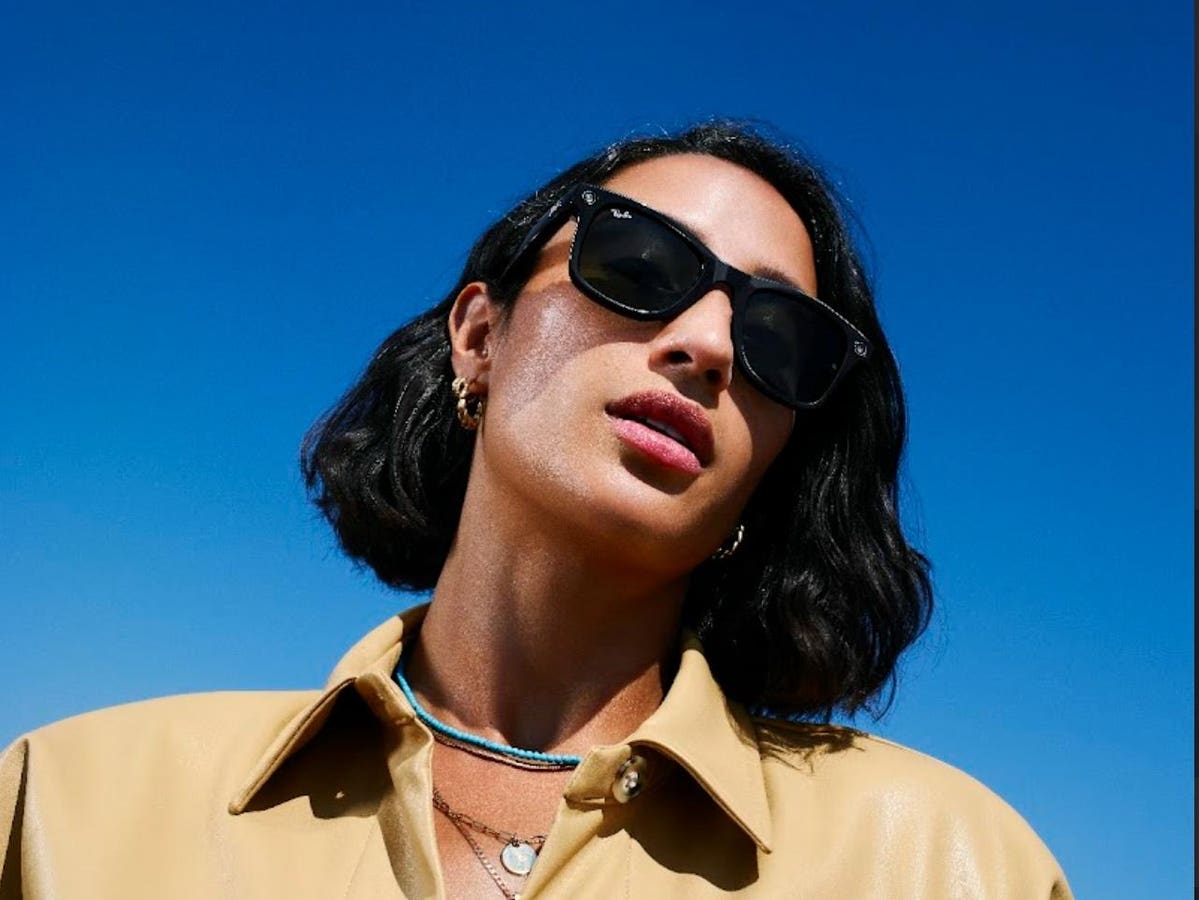
This past summer, I updated my sunglass wardrobe with 5 new pairs. This is hardly a normal occurrence but it felt necessary to upgrade from the worn-out ones I’ve been wearing for the past few years. Amongst these new acquisitions were a pair of Ray-Ban Stories, the smart glasses by the heritage eyewear brand.
Of these 5 pairs, my face ended up wearing only one of them this summer. It’s probably not a surprise that one pair was the Ray-Ban Stories, now called Ray-Ban Meta since the launch of the glasses’ second generation. I couldn’t take them off my face. They are timelessly stylish, perfect for making calls on the go and while driving, very useful for sports—I’m an equestrian in my spare time and the glasses proved a game changer—and they were all of these things while still being fun and easy to use. In short, Ray-Ban Meta glasses are addictive.
“I’m so happy that you are enjoying the product already,” laughs Rocco Basilico, the Chief Wearables Officer of EssilorLuxottica, the company who owns heritage eyewear brands such as Ray-Ban and Persol, and holds the license to manufacture glasses for luxury giants such as Chanel. He is also the man behind the Ray-Ban’s foray into smart glasses.
I tracked Basilico down to talk all things smart glasses and as we chat over Zoom, we are both gushing about the product–he as its creator and I as its end user. “It’s a big milestone for us, and it’s a big milestone for me,” he says with pride.
But the magic of Ray-Ban Meta is that they are about more than simply function. Yes, they record videos, take photos, and are headphones for music and voice calls. The second generation version released just a month ago also has Siri-style AI, sophisticated live stream capabilities, and advanced sound isolation to elevate the headphone experience.
Yes, these sunglasses–and prescription glasses–do all of these things.
However, Ray-Ban Meta is an impeccable example of what the seamless marriage between technology and fashion looks like. Getting that many features into such a small product while staying true to the authenticity of Ray-Ban and an unwavering conviction to design was the undertaking task Basilico decided to conquer.
“We were very firm on the design,” he says. “We were trying to fit a lot of technology in a beautiful pair of glasses without compromising iconic styles.” And how could Ray-Ban compromise? Altering a frame as iconic as the Wayfarer–yes, those Wayfarers, Audrey Hepburn’s choice of shades in Breakfast at Tiffany’s–was simply not an option.
Rocco Basilico, pictured here, knewthe design of Ray-Ban’s smart glasses were a key component for … [+]
Culprit Creative
Weight and comfort also informed the end product as the goal for the glasses and sunglasses was not to be much heavier than their non-technological counterparts. I am told by Basilico the second generation versions have been engineered for an even better fit through the addition of nose pads and other engineering tweaks. It has to be said, though, the first-generation ones which I used this summer (I haven’t tried the second generation) were already light and comfortable.
To be fair, Ray-Ban Meta are not the only smart glasses on the market. Snapchat, Amazon, and Bose have versions each with their own sets of features and benefits from GPS to augmented reality. But overall, from both a design and features perspective, Ray-Ban Meta offer the most classic, yet cool, design with the sorts of features which can appeal to a wide variety of users.
They are advanced enough to support the needs of the most active content creator, simple enough for those who would like to enjoy a run and not have to worry about headphones shifting, and functional enough to take high-quality photographs and videos with ease. Also, the visual aesthetic of glasses gives no indication that they are anything other than a traditional pair of frames, which some of the others on the market have been unable to achieve. “We wanted to make sure they didn’t look like a gadget instead of a normal pair of glasses or sunglasses,” Basilico explains. The price point of $299 also keeps Ray-Ban Meta accessible.
The second generation of Ray Ban stories have customizable options such as color.
Luxottica
Basilico tends to not think about the competition in the way one might think. Instead, he thinks about the category as a whole. “I think competitors are happy that somebody else is creating the same sort of devices,” he says. “Because, this way, it gives credibility to the whole category.”
One wonders what it takes, from a production perspective, to go from producing analog products to tech ones, something which the executive describes as “the biggest challenge.”
“It was a big shift and a radical change in the innovation of the company because we had to learn how to integrate the technology from a hardware standpoint, which is not easy,” he says.
Their strategy was to use the talent they already had, educate them, and make a few key hires in the area of technical engineering to push the project forward. “The engineers we had already were solid and they were eager to learn, and the process was also entirely different than when we acquire another company and have to do a big hire,” Basilico says. “This project required internal growth.”
Created with Meta the software partner for the product (hence the name), the collaboration ensures the highest levels of technological innovation and evolution allowing Ray-Ban to focus on what they do best, which is creating products of superior design and user experience.
But What makes Basilico most proud about Ray-Ban Stories?
“This may sound silly, but when I see people wearing the product in the street it really makes me smile,” he says. “That’s what makes me the most proud.”
